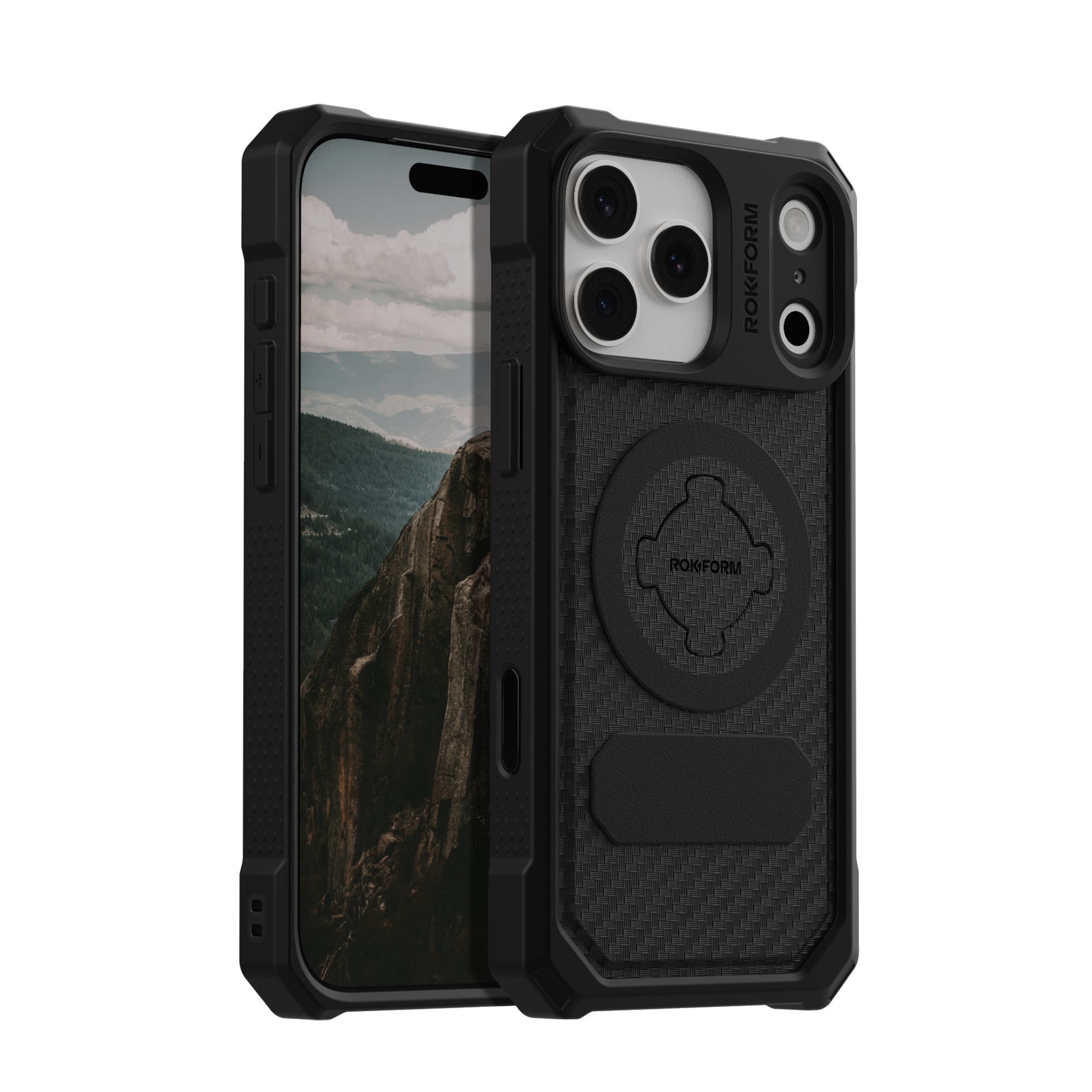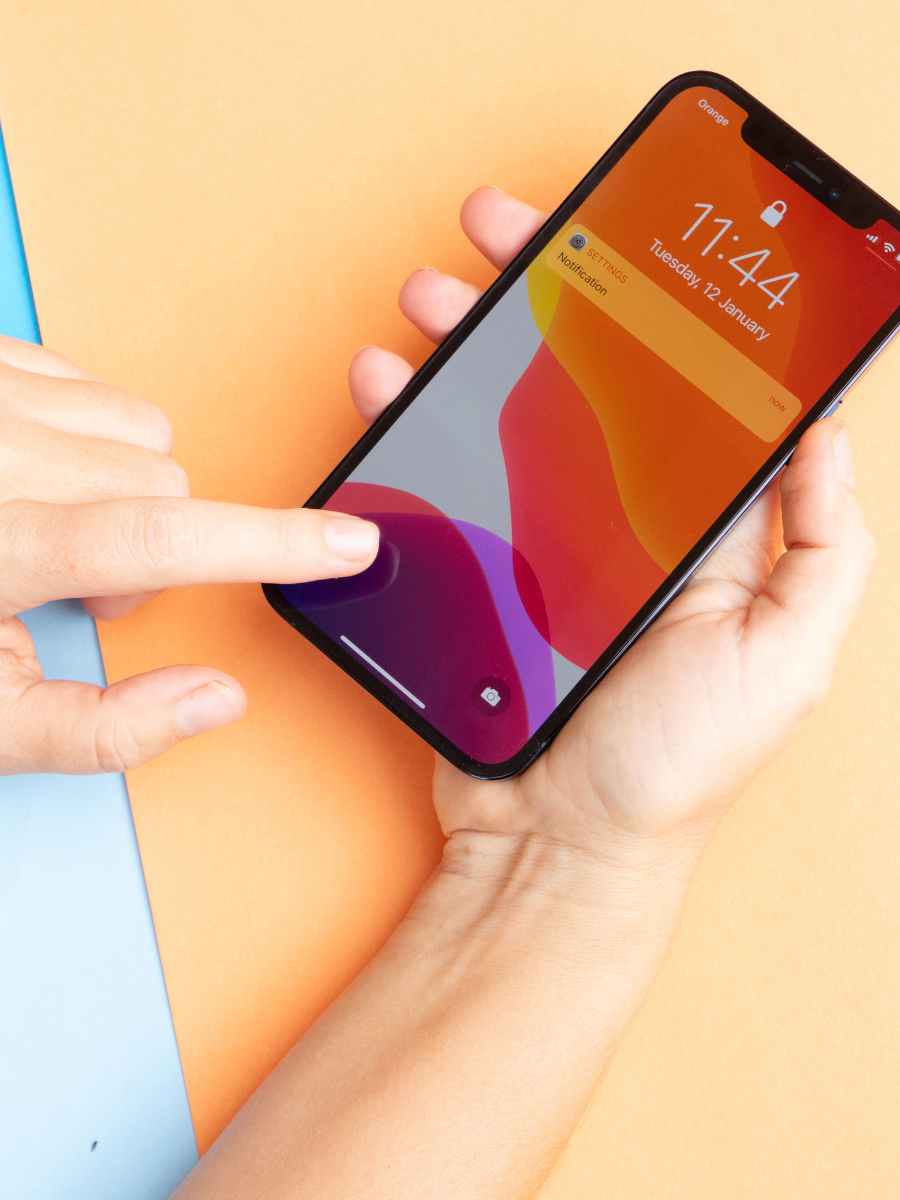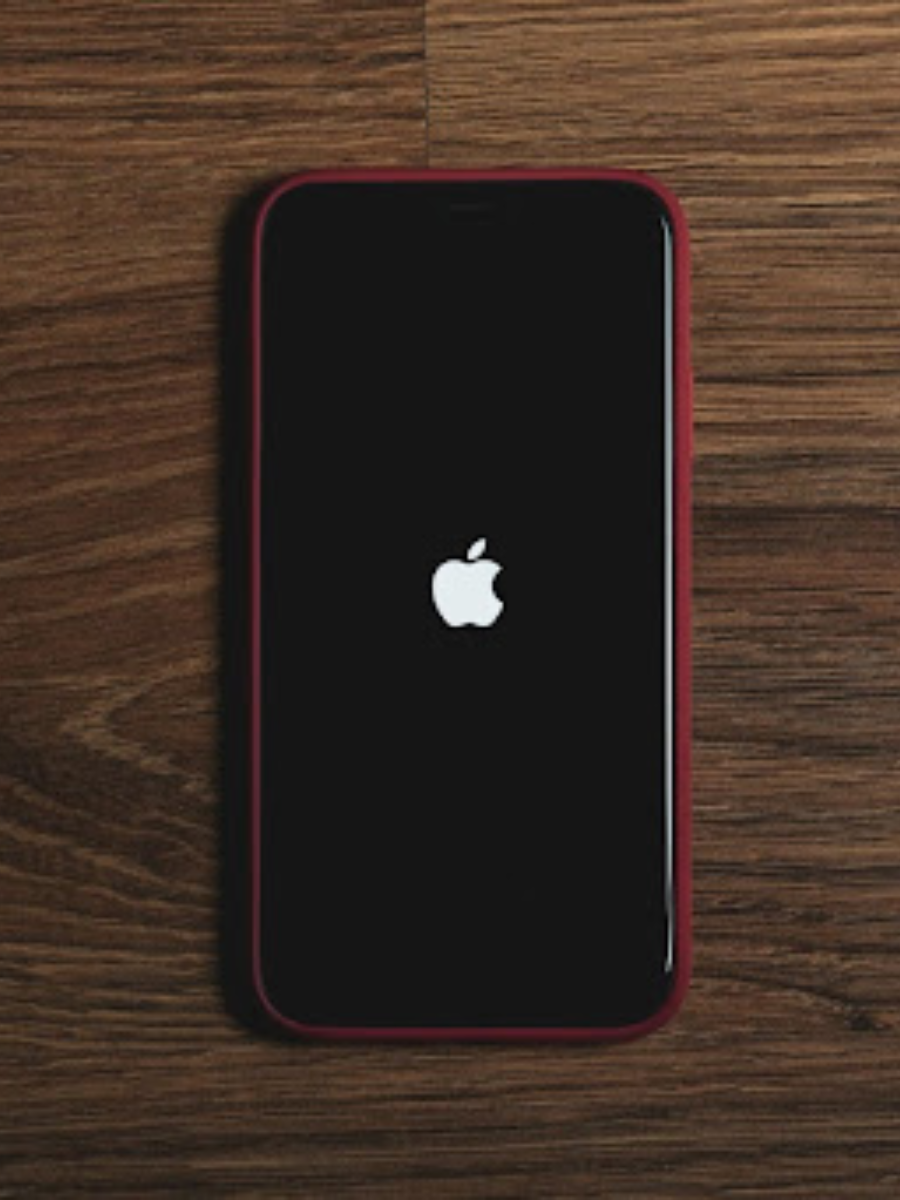Your iPhone not charging isn't just annoying. It's a critical failure, especially when you rely on your phone for work. You can wiggle the cable and plug it in and out all you want, but you're not fixing the real problem. In some cases, using a wireless charger can help get the job done. No matter what, it’s time to forget the guesswork. We’re going to cut through all that noise and give you the real-world reasons why your phone is dead on the plug. This is your expert debrief on what’s actually happening inside your phone and how to fix it, no BS - just facts. Let’s get into it:
Table of Contents
TL;DR
Extreme heat or cold will kill your charge, even if the phone feels fine
Your charging port and cables wear out on a microscopic level, causing invisible failures
Software bugs can block perfectly good chargers from working
Pocket lint and gunk are the silent killers of charging ports
Reason 1 - Your Phone Is Secretly Overheating
Sometimes your iPhone won’t charge even if the port is fine. The reason: it’s a little too hot under the hood. Your phone is a heat-making machine. When the battery or processor gets too hot, the whole system panics to avoid cooking itself. The first thing it does is kill the charge. That's the thermal cascade.
Lithium-ion batteries are incredibly sensitive to heat. So, if your phone stops charging on a hot day, don't overthink it. It's the heat.

Your Battery Hates Extreme Temps
Extreme temperatures - hot or cold - are charging-killers. Lithium-ion batteries only work within a specific temperature window. Apple says to charge between 32°F and 95°F. Go outside that range, and the phone shuts down charging to protect the battery from damage.
If your iPhone won't charge in the cold, it's not your charger's fault. It's physics. Below 32°F, the battery's electrolyte thickens, blocking the ion flow needed for charging. It’s essentially frozen.
Take Mark’s iPhone 11. He left it in his car overnight during a Minnesota winter. He plugged it in, saw the charging symbol, but it was stuck at 15% for an hour. After just 20 minutes in his warm jacket pocket, it jumped to 45% charge in 30 minutes. Heat matters.
Is Your Case Cooking Your Phone?
If your phone is cool to the touch but still not charging, your case is probably the culprit. Many cheap cases trap heat, blocking airflow and causing the system to shut down charging, even if the phone feels fine on the outside.
Take the case off and put the phone on a cool surface. Nine times out of ten, it’ll start charging within minutes. Your case needs to pull heat out, not trap it in. Our Rokform cases are built with materials that don’t cause overheating. It's one reason pros trust them to stay reliable in any condition.
You're Working It Too Hard
Still no charge? You might be overworking it. Background apps, system updates, and even screen brightness can drain power faster than your charger can supply it. Your phone can easily burn 15-20 watts just refreshing apps in the background, but a standard charger might only provide 5-12 watts. The math doesn't add up. Your phone is spending more power than it's gaining.
The fix is simple: close some apps or switch to Low Power Mode. This gives your charger a fighting chance. Disabling Background App Refresh is the fastest way to see that percentage start climbing again.
Checklist: Force a Faster Charge
When your iPhone’s not charging, this checklist may help you:
Enable Low Power Mode before plugging in
Close heavy apps (games, video, navigation)
Disable Background App Refresh
Turn off Location Services for non-essentials
Use Airplane Mode for the fastest charge
Remove the phone case to let heat escape
Use a higher-wattage charger (20W+)
Don't use your phone for the first 10 minutes of charging
While you’re here, check out our guide on how wireless charging works.

Reason 2 - Your Gear Is Just Worn Out
Your Lightning Port Is Dying
That Lightning port isn't built to last forever. You plug your cable in thousands of times, and each time, you're causing microscopic wear on the pins. After a few thousand cycles, the spring steel weakens. The pins get tired and lose their grip. Charging becomes a game of chance. You'll find yourself wiggling the cable just to see the charging icon appear - a classic sign of a worn-out port.
Throw in some moisture, and you get galvanic corrosion - tiny buildups of gunk that block power flow. You can't stop metal fatigue, but you can slow it down. Plug the cable in straight. Don't yank it out. A quick clean with isopropyl alcohol once a month helps. But the ultimate defense is a good case. A rock-solid iPhone case with a deep, protective cutout around the port will shield it from impacts and keep the cable from flexing and damaging the pins.
Here’s a real-world breakdown of how long your port will likely last:

Your Cable Is Giving Up the Ghost
Sometimes the phone is fine - it's the cable that's quietly dying. The copper wires inside break down from bending and heat. Over time, the metal crystallizes. These tiny tears increase electrical resistance. Charging slows down, then stops completely. This is why a brand-new cable can often solve a charging problem instantly.
Flex Point Failure
The weak spot is always the flex point within six inches of the connector. That's where the copper breaks, especially if you yank or coil the cable too tightly. A cable can still work for data transfer but fail for charging. They have different power thresholds.
Case in point: Jennifer's iPhone 13 wouldn't charge. Her cable worked for data, but not power. A multimeter showed the cable's resistance had shot up - low enough for data, but too high for the iPhone's power rules. If your port is clean, suspect the cable. The second you see exposed wires, toss it. It's done. Investing in a high-quality, reinforced cable isn't an upsell; it's insurance against failure.
Don't Forget the Charging Brick
We trash-talk bad cables all the time, but the power adapter - the brick that plugs into the wall - can fail too. These things get dropped, kicked, and cooked by bad outlets. They get tossed in bags where the prongs get bent. Over time, the internal components can burn out.
A failing power adapter can lead to a total inability to charge or, even worse, deliver inconsistent power that slowly damages your phone's battery. It might send small surges or dips in voltage that your iPhone's protective circuits have to fight. Eventually, this can lead to slower charging speeds and a shorter battery lifespan. If you've tried new cables and the port is clean, try a new, high-quality power adapter. It's often the last piece of the hardware puzzle.
Reason 3 - It's a Software Glitch, Not Hardware
Sometimes, the hardware is perfect, but the software is confused. Your iPhone uses complex algorithms to manage power. When that code gets corrupted or out of sync, even flawless hardware won't charge. Your battery might lie, showing 100% when it's really much lower. Or, the power management system might block charging entirely as a false protective measure. The fix? A system reset or battery recalibration.
Your Battery Is Lying to You
Your phone can straight up lie about its charge. It might say 100% when it's really at 70%. The older the battery, the worse this "calibration drift" gets. According to the pros at iFixit, if your battery reading is off by more than 10%, you need to recalibrate it.
Here's the simple fix: Charge your phone to 100%. Then use it until it's completely dead. Finally, do one more full, uninterrupted charge. This resets the battery's brain. If the percentage was off, it should be accurate now.
Botched Software Updates
In other cases, your iPhone not charging might be because a buggy update corrupted your charging profile. These profiles tell the phone how to charge its specific battery type. If the profile fails, your iPhone starts following the rules for the wrong battery, and charging stops. The only real fix is a DFU (Device Firmware Update) reset. It’s a clean wipe that restores the correct, factory-fresh software.

Fake Accessory Rejection
Your iPhone uses a system called MFi (Made for iPhone) to check if charging accessories are safe and compatible. While this usually works well, it can sometimes make mistakes rejecting good cables or accepting faulty ones.
A common issue is the degradation of the tiny chip in the Lightning connector that handles communication with the iPhone. When it starts to fail, charging becomes unreliable or stops altogether.
Here’s how to nail down the issue fast:
Authentication Troubleshooting Steps
-
Test Multiple Cables
Test 3+ Apple-certified MFi cables.
Plug each cable 10x, watch for rejection messages.
Watch for any “This accessory may not be supported” messages.
-
Change the Environment
Charge in different spots, away from electronics.
Switch on Airplane Mode while charging to reduce interference.
Test in cooler or warmer temperatures and note any changes.
-
Force a Restart
Force restart iPhone, then reset settings.
Go to Settings > General > Reset > Reset All Settings .
If it’s still not working, try a full restore using DFU mode .
-
Test Other Chargers
Test with different chargers (like 5W, 12W, or 20W adapters).
Try wireless charging if your iPhone supports it.
Plug into a computer USB port instead of a wall outlet to compare.
Reason 4: Your Port Is Clogged with Gunk
Lint, Fibers, and Other Debris

Skin Oil and Grime
The oils from your fingers are another silent killer. They transfer to your cable and then into the port. The heat from charging can bake these oils into a clear, insulating film over the metal contacts. You can't see it, but it's blocking the electrical connection. Worse, the acids in the oil corrode the metal, permanently damaging the port. A quick wipe with a swab and some isopropyl alcohol will dissolve the oil and evaporate cleanly.
Before you head out, have a look at the top MagSafe battery packs to power up your iPhone on-the-go!
Reason 5 - Your Power Source Is The Problem
So you’ve checked the phone, the cable, the charging brick, and the port is spotless. Still nothing. Have you thought about checking the wall itself? A shocking number of charging failures have nothing to do with your Apple gear. The problem is the power source you're plugging into. It's either weak, unstable, or just plain faulty. Your iPhone is smart enough to reject garbage power to protect its sensitive electronics.
The Unreliable Wall Outlet
Think about the outlets in your house. That one behind your bed or in the garage has probably been there for decades. With years of use, the metal contacts inside the outlet lose their tension. They can't grip the prongs of your charger tightly anymore. This creates a loose connection, which leads to arcing and fluctuating power - or no power at all.
An old, worn-out outlet can't deliver the steady stream of electricity your iPhone needs. It might work for a simple lamp, but your phone's charging system is far more sensitive. If you suspect an outlet is bad, try plugging into a different one, preferably in a newer part of the house or one you know is reliable. Or, alternatively, you can grab one of our awesome Rokform Magnetic Wireless charging stands, allowing your iPhone to charge up on-the-go. Just be sure that the outlet you choose to charge our stand is as reliable as our ROK-solid accessories are!
The Overloaded Power Strip
That cheap, six-outlet power strip you bought in college is a charge-killer waiting to happen. Most people treat them like an infinite source of power, plugging in their computer, monitor, speakers, a lamp, and then their phone charger. This is a recipe for failure.
Basic power strips are just extension cords with more holes. They don't have circuitry to balance the load. When you have multiple devices drawing power, the voltage can drop significantly. Your phone ends up starved for electricity. It might charge incredibly slowly or not at all. For reliable charging, plug your power adapter directly into a wall outlet you trust, not into a crowded, overworked power strip.
The Weak Computer USB Port
Plugging your iPhone into your laptop or desktop computer to charge seems convenient, but it's one of the least effective methods. The standard USB-A ports on most computers (especially older ones) are pathetically weak. They were designed for data transfer, not for charging a modern, power-hungry smartphone.
A typical USB 2.0 port delivers a measly 2.5 watts of power. A USB 3.0 port is better, but still no match for a dedicated wall charger. Your iPhone will charge at a snail's pace. In some cases, if you're using your phone while it's plugged into a computer, it might actually lose battery. Those ports barely trickle out enough power to keep your phone alive, let alone charge it fast. Always use a dedicated wall brick for a real charge. Our PowerTrip 100 USB-C Charging cable takes the worry out of it all - while giving you just what you need to fix your iPhone not charging in a flash!
The Unstable Car Charger
Your car's electrical system is a chaotic environment. The power supplied by the 12V socket (the old cigarette lighter) is notoriously "dirty." It's subject to voltage spikes and drops, especially when you start the engine or run accessories like the AC.
Most cheap, gas-station car chargers are junk. They have no internal circuitry to smooth out this unstable power. They pass that electrical chaos straight to your phone. Your iPhone's safety circuits will detect the unstable voltage and repeatedly stop the charge to protect the battery. That's why your phone might charge for a minute, then stop, then start again. You need a car charger that's built like a tank, with smart circuitry designed to filter that dirty power and deliver a clean, stable charge your phone will actually accept.
Final Thoughts
iPhone Not Charging? Here’s the Real Reason Why
When it comes to your iPhone not charging, we aim to keep it real around here. Heat, wear, and gunk will kill your charge. A dead port means downtime, headaches, and repair bills. Protecting your phone before it fails isn't a luxury - it's the only smart move.
Our iPhone cases are built for this reality. They don't just protect against drops. They create a reinforced buffer around your charging port, shielding it from the daily abuse that leads to failure. We build them with materials that pull heat away from your phone, because a hot phone is a phone that won't charge.
And when you pair them with our MAGMAX™ wireless chargers, you stop the wear-and-tear from constant plugging and unplugging altogether. Snap it on, power up, and get back to work without wrecking your port.
Bottom line - Keep your port clean, use a quality cable, and wrap your phone in a Rokform case. It's the only way to guarantee your phone is ready when you are.





